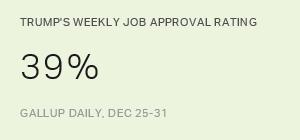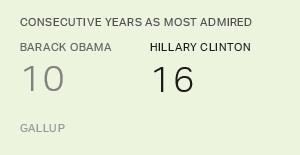After the unexpected victory of Donald Trump in the 2016 presidential election, the year-old Trump administration now faces its first midterm election on Nov. 6. The daunting record of past midterms must be uppermost in their minds. Is a debacle for the party in power looming?
While Trump touts the strengthening economy, as well as his legislative and other policy successes, these tend to be overshadowed by the more rocky aspects of his freshman year. His first year has included unprecedented turnover in the White House, congressional investigations, a special prosecutor, inflammatory partisan conflicts and mutual distrust, extending to some extent within his own party.
Enter the U.S. Constitution which, in midterm elections, guarantees an indirect evaluation of a presidency every 24 months and gives a president a "check-up" by the voters. Voters in 2018 will evaluate the performance of Trump and his party and give a "thumbs up" or "thumbs down" on the direction he's taking the country. The party in power has all its House seats up for re-election along with eight of its 52 (soon to be 51) Senate seats, not to mention a slew of governors and other state elected officials. It will be Trump's most important test of his blueprint to "Make America Great Again," even though his name will not appear on a ballot in any state.
Midterm Elections Historically Unkind to First Term Presidents
Most midterm elections have been unkind to first-time presidencies, and only three times in the last century (in 1934, 1998 and 2002) has a president's party gained seats in the U.S. House. History teaches us that the best that any administration can reasonably hope for is to suffer a limited number of losses in the Congress, which in 2018 would mean Republicans could retain majority control.
During nearly a century of U.S. elections, the party of a newly-elected president has lost an average of 23 seats in the U.S. House. If this normal disadvantage holds for 2018, it would result in a "toss up" for control of the U.S. House of Representatives, given that the GOP holds 239 seats to the Democrats' 193 as of December (with three vacancies). This type of divided government would result in more gridlock. Stalemates on the rest of the Trump agenda items would be a foregone conclusion, likely leading to a severely weakened candidacy for Trump in the 2020 presidential election.
It is worth remembering that a few first-term midterm elections changed recent history or redefined a presidency. The first was the 1966 election when President Lyndon Johnson was responsible for his party's loss of 47 House seats, which most attribute to his escalation of the war in Vietnam. While Democrats retained the majority in Congress, the gains energized a dispirited Republican Party, giving rise to a new era of conservative leaders, both in and out of Congress.
Although both were subsequently elected for a second term, Bill Clinton and Barack Obama each suffered devastating losses of party control in Congress during their first midterm that altered how they governed.
The Democrats lost 52 House seats in the midterm election of 1994, after the newly-elected Clinton attempted to pass sweeping healthcare legislation. Clinton tacked a very different legislative course after these losses. Obama suffered similar losses during his first term. After passing the Affordable Care Act earlier in the year, his party lost 63 U.S. House seats in 2010, giving the GOP control, and forcing Obama to govern under divided government for the duration of his presidency.
President Obama called his first midterm election a "shellacking," somewhat reminiscent of George W. Bush characterizing his own party's loss of 30 seats in the 2006 midterms as a "thumping." No matter the term, it was a referendum on the president's and his administration's leadership.
Indicators for Trump in the Run Up to the 2018 Midterms
Will there be a new word coined by President Trump that reflects the midterm outcome for 2018, whether that be a loss, or a break with historical precedent as his party wins more seats? What signs should we watch for that will predict the outcome?
First and foremost is presidential job approval, which -- averaging 39% in the month of December -- gives President Trump a very poor chance of bucking the midterm odds if it holds at this level.
Trump's 20-point approval deficit in recent Â鶹´«Ã½AV polling does not bode well for him, in part because none of the past five presidents saw an increase in their approval rating in the year before their first midterm. Ronald Reagan's approval rating fell from a net +18 positive in November 1981 to a net -3 in November 1982, as the country sank into recession. In November 1993, Clinton had a net positive job approval rating (+5), while by midterm election-time, the positive margin had vanished and his party lost majority control of the U.S. House. President Obama, one year out from his first midterm election, also had a comfortably positive net job approval rating (+13), but that also disappeared by November 2010 and his party lost majority control of the U.S. House.
Both Bushes suffered approval declines in their second year, but because they started from such a high point in November of their first year, they still went into their first midterms with strong approval. Additionally, the continued focus on the 9/11 terrorist attacks somewhat insulated George W. Bush in 2002 from historical trends, not only maintaining control of the U.S. House, but actually picking up eight seats.
| Administration | Approve | Disapprove | Net approve | |||||||||||||||||||||||||||||||||||||||||||||||||||||||||||||||||||||||||||||||||||||||||||||||||
|---|---|---|---|---|---|---|---|---|---|---|---|---|---|---|---|---|---|---|---|---|---|---|---|---|---|---|---|---|---|---|---|---|---|---|---|---|---|---|---|---|---|---|---|---|---|---|---|---|---|---|---|---|---|---|---|---|---|---|---|---|---|---|---|---|---|---|---|---|---|---|---|---|---|---|---|---|---|---|---|---|---|---|---|---|---|---|---|---|---|---|---|---|---|---|---|---|---|---|---|---|
| % | % | pct. pts. | ||||||||||||||||||||||||||||||||||||||||||||||||||||||||||||||||||||||||||||||||||||||||||||||||||
| Ronald Reagan | ||||||||||||||||||||||||||||||||||||||||||||||||||||||||||||||||||||||||||||||||||||||||||||||||||||
| Oct 30-Nov 2, 1981 | 53 | 35 | +18 | |||||||||||||||||||||||||||||||||||||||||||||||||||||||||||||||||||||||||||||||||||||||||||||||||
| Nov 5-8, 1982 | 43 | 47 | -3 | |||||||||||||||||||||||||||||||||||||||||||||||||||||||||||||||||||||||||||||||||||||||||||||||||
| George Bush | ||||||||||||||||||||||||||||||||||||||||||||||||||||||||||||||||||||||||||||||||||||||||||||||||||||
| Nov 2-5, 1989 | 70 | 17 | +53 | |||||||||||||||||||||||||||||||||||||||||||||||||||||||||||||||||||||||||||||||||||||||||||||||||
| Nov 1-4, 1990 | 58 | 32 | +26 | |||||||||||||||||||||||||||||||||||||||||||||||||||||||||||||||||||||||||||||||||||||||||||||||||
| Bill Clinton | ||||||||||||||||||||||||||||||||||||||||||||||||||||||||||||||||||||||||||||||||||||||||||||||||||||
| Nov 2-4, 1993 | 48 | 43 | +5 | |||||||||||||||||||||||||||||||||||||||||||||||||||||||||||||||||||||||||||||||||||||||||||||||||
| Nov 2-6, 1994 | 46 | 46 | 0 | |||||||||||||||||||||||||||||||||||||||||||||||||||||||||||||||||||||||||||||||||||||||||||||||||
| George W. Bush | ||||||||||||||||||||||||||||||||||||||||||||||||||||||||||||||||||||||||||||||||||||||||||||||||||||
| Nov 2-4, 2001 | 87 | 9 | +78 | |||||||||||||||||||||||||||||||||||||||||||||||||||||||||||||||||||||||||||||||||||||||||||||||||
| Oct 31-Nov 3, 2002 | 63 | 29 | +34 | |||||||||||||||||||||||||||||||||||||||||||||||||||||||||||||||||||||||||||||||||||||||||||||||||
| Barack Obama | ||||||||||||||||||||||||||||||||||||||||||||||||||||||||||||||||||||||||||||||||||||||||||||||||||||
| Nov 5-7, 2009 | 54 | 41 | +13 | |||||||||||||||||||||||||||||||||||||||||||||||||||||||||||||||||||||||||||||||||||||||||||||||||
| Nov 5-7, 2010 | 47 | 46 | +1 | |||||||||||||||||||||||||||||||||||||||||||||||||||||||||||||||||||||||||||||||||||||||||||||||||
| Donald Trump | ||||||||||||||||||||||||||||||||||||||||||||||||||||||||||||||||||||||||||||||||||||||||||||||||||||
| Oct 30-Nov 5, 2017 | 38 | 58 | -20 | |||||||||||||||||||||||||||||||||||||||||||||||||||||||||||||||||||||||||||||||||||||||||||||||||
| GALLUP | ||||||||||||||||||||||||||||||||||||||||||||||||||||||||||||||||||||||||||||||||||||||||||||||||||||
Another key indicator to watch in the 2018 elections is measurements of generic congressional ballot preferences immediately before the election; these try to simulate a "party vote" across the nation. Other variables have to be taken into consideration, such as the inertia of incumbency, the state of the economy, media coverage of the president himself and the demographics of the various 435 congressional districts.
The most important variable to watch for is the intensity of the political base on both sides and how this manifests itself in voter turnout of Democrats and Republicans. The real bottom line for every midterm election is "turnout."
| Administration | First midterm election year | Republican U.S. House vote (U.S., in millions) | Democrat U.S. House vote (U.S., in millions)[1] | Net vote for party of incumbent president | Change in U.S. House seats for president's party[2] | ||||||||||||||||||||||||||||||||||||||||||||||||||||||||||||||||||||||||||||||||||||||||||||||
|---|---|---|---|---|---|---|---|---|---|---|---|---|---|---|---|---|---|---|---|---|---|---|---|---|---|---|---|---|---|---|---|---|---|---|---|---|---|---|---|---|---|---|---|---|---|---|---|---|---|---|---|---|---|---|---|---|---|---|---|---|---|---|---|---|---|---|---|---|---|---|---|---|---|---|---|---|---|---|---|---|---|---|---|---|---|---|---|---|---|---|---|---|---|---|---|---|---|---|---|
| Ronald Reagan | 1982 | 27.6 | 35.1 | -7.5 | -26 | ||||||||||||||||||||||||||||||||||||||||||||||||||||||||||||||||||||||||||||||||||||||||||||||
| George Bush | 1990 | 27.4 | 32.4 | -5 | -8 | ||||||||||||||||||||||||||||||||||||||||||||||||||||||||||||||||||||||||||||||||||||||||||||||
| Bill Clinton | 1994 | 36.3 | 31.5 | -4.8 | -54 | ||||||||||||||||||||||||||||||||||||||||||||||||||||||||||||||||||||||||||||||||||||||||||||||
| George W. Bush | 2002 | 37.1 | 33.6 | 3.5 | 8 | ||||||||||||||||||||||||||||||||||||||||||||||||||||||||||||||||||||||||||||||||||||||||||||||
| Barack Obama | 2010 | 44.2 | 38.9 | -5.3 | -63 | ||||||||||||||||||||||||||||||||||||||||||||||||||||||||||||||||||||||||||||||||||||||||||||||
| [1] https://clerk.house.gov/member_info/electioninfo/index.aspx (See page at end of each year's document for summary of U.S. House vote)
[2] http://www.presidency.ucsb.edu/data/mid-term_elections.php |
|||||||||||||||||||||||||||||||||||||||||||||||||||||||||||||||||||||||||||||||||||||||||||||||||||
| Â鶹´«Ã½AV | |||||||||||||||||||||||||||||||||||||||||||||||||||||||||||||||||||||||||||||||||||||||||||||||||||
Obviously, the preferred outcome for the Trump administration in the 2018 midterm elections would be for something akin to the 2002 Bush midterm, when 3.5 million more votes were cast nationally for Republicans than Democrats -- an indication of stronger GOP turnout. That is seemingly unlikely absent a galvanizing national event such as 9/11. But even the 1990 midterm during the senior George Bush's presidency, when the Republicans lost only eight seats, would be a win for Trump. He will, on the other hand, want to avoid the wipeouts of 1994 and 2010 that swept the majority party, then Democrats, out of power.
Many journalists and political observers are already forecasting that the 2018 midterm will be a "wave election" and that Democrats will achieve great election success via a campaign to reverse Trump's policies. Data driven analytics have shown a much closer race. According to an analysis by the Huffington Post in August, the Republicans would lose control of the U.S. House by about seven seats (Republican control going into 2018 is +24). More recent forecasting models by Decision Desk HQ offer a range of outcomes, from Republicans retaining a three-seat majority, to the Democrats winning by nine seats.
These predictions are all plausible since the party out of power historically regains some of that power back in the first midterm election. With President Trump's comparatively low job approval ratings, it is likely that the advantage this time around will go to the party out of power, the Democrats.
Bottom Line
The 2018 House midterm elections are destined to be among the most watched and interesting races in recent times and the scene doesn't look good for Republicans. Trump seems to believe he will improve his party's chances of maintaining majority control by making legislative progress on some of his remaining big campaign promises, such as health care, infrastructure repair and immigration reform. He also believes the recent tax bill will help the Republicans once voters see more money in their paychecks in 2018. This would give him the opportunity to "nationalize" the 2018 midterm elections based upon a potentially improved general economy, particularly if there is continued job growth.
The stakes are certainly high, as even average losses would jeopardize the Republican majority, and therefore Trump's legislative agenda, for at least the next two years.
Will history repeat itself, or will Trump -- whose name was once synonymous with gaming and casinos -- manage to defy the odds stacked against him once again?




